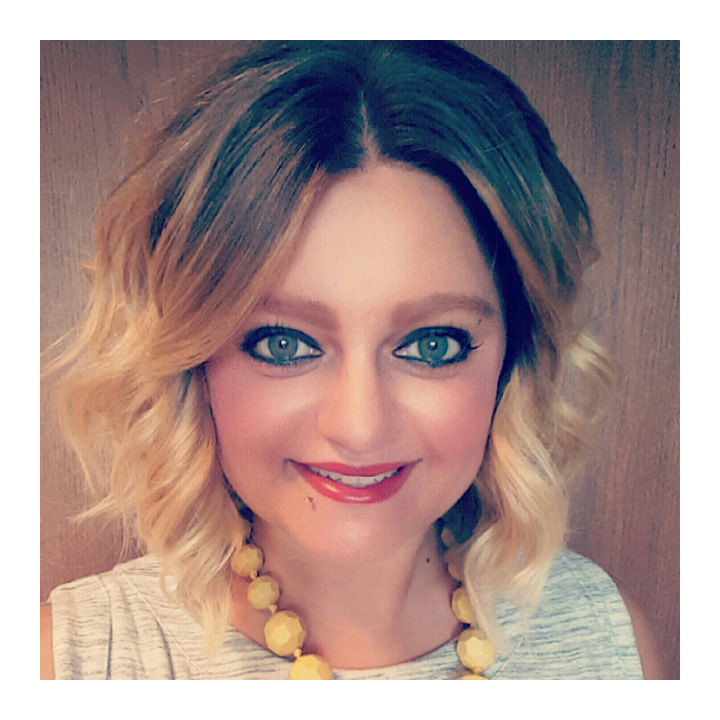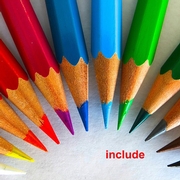Including LGBTQ Youth in Pregnancy Prevention: How to Make It Work
By Cassidey Streber, MA | August 25, 2016
Program Coordinator, Youth Services of Tulsa, Adolescent Health/PregNOT
A student I’ll call Shay came in and sat at the back of my classroom. It was the first class meeting. Other students came bounding in, adding a bit of lively chaos to the mix.
I surveyed the students as they settled and we got started. I took note of Shay in particular. Shoulders up. Sighing. Arms crossed. Uncrossed. Looking out the window. Scribbling on a piece of paper. Not interacting with other students. Not looking at me. Not really there.
And then, as we got into the lesson, something happened. Shay sat up and began to watch me. Eyes furrowed, then a smile, then—amazingly—a question and comment from this student. Shay had become part of the class and was engaged in the lesson.
I know exactly what brought Shay into the process. In my language and the activities I brought to the class, I was offering a setting that was inclusive, authentic and safe for students of any sexual identity or gender. Shay, a student from the LGBTQ community, experienced the class as relevant and welcoming.
Webinar from OAH on LGBTQ Inclusivity
Cassidey Streber was one of the presenters in a recent webinar hosted by the Office of Adolescent Health. It is called, “How to Make it Happen: LGBTQ Inclusivity.” You can find links to the slides, audio recording and written transcript here. (Scroll down to June 2, 2016.)
About My Program
I’m the Program Coordinator for the Adolescent Health/PregNOT program of Youth Services of Tulsa. We’re in our seventh year of a Teen Pregnancy Prevention program funded by the Office of Adolescent Health. Our goal is to prevent HIV, other STD and unplanned pregnancy in youth throughout Tulsa County. Last year my team reached over 3,400 youth through three evidence-based sex education curricula. We have the second highest teen birth rate among Oklahoma counties, and Oklahoma has the second highest teen birth rate in the nation.
We serve youth ages 12 to 24 in a variety of settings, including schools, the juvenile justice system, youth health clinics and transitional programs for homeless youth. It’s a diverse population, encompassing youth with a range of strengths, resources and challenges. One of the longstanding commitments of our program is to recognize the particular sexual risks facing LGBTQ youth and engage them in our prevention programs.
Inclusiveness Makes a Difference
Taking steps to enhance LGBTQ inclusiveness and equity creates a welcoming environment that engages all youth and makes a real difference for those at greatest risk. We use inclusive language, make the content relevant and employ strategies that maximize our ability to reach a wide range of youth.
Inclusive Language
All of our staff use inclusive language in our programs. We use gender-neutral terms or terms that encompass all genders (not just male or female). We don’t make assumptions about youths’ attractions, experiences or gender identities—a girl student in a relationship doesn’t necessarily have a boyfriend. We identify our own personal gender pronouns and invite youth to state their own.
It can take a little practice to get used to this, but the benefits are worth it. Our LGBTQ youth recognize and appreciate that we’re including them. The classroom becomes a safe and inclusive place, and, as was true for Shay, we see in their body language and participation that it’s making a difference.
Students who are not LGBTQ don’t usually notice the difference. We teach the same content and offer the same medically accurate information, but with inclusive language we reach more people.
Group Agreements and Inclusion Statement
One of the first things we do in any class is go over group agreements. These include a statement of inclusion: we expressly state that we welcome participants of all sexual orientations, identities and genders. We let youth know we are there to act as advocates and allies for all youth.
This sets a positive and inclusive tone for the rest of the program. We hear a wider range of questions from all youth, have richer discussions and see fewer incidents of anti-LGBTQ comments.
New editions of some of the curricula we use include statements of diversity and introductory activities where we ask for personal gender pronouns. But even if these are not written into a curriculum, they are easy adjustments to make and will be considered acceptable adaptations by most program officers and funders.
Safe Grouping for Activities
A common way teachers and facilitators break youth into small groups is to say, “OK, boys in one group, girls in another.” Many people don’t understand how difficult this can be for someone who is gender fluid or transgender. If they go where they are “expected,” the class isn’t being responsive or relevant to them. If they go to the group where they identify, they may be outing themselves before they’re ready. And if they don’t feel they belong in either group, they are not able to be authentic no matter where they go.
In our program, we use a lot of ways to group youth. Last name initials. Month of birth. Dog person or cat person. Morning person or night person. Favorite colors, choose a number, take a sticker. The point is, none of them ask youth to identify their gender, sexual orientation or sexual identity.
Identity and Relationship Terms
Young people, especially LGBTQ youth, have a range of different relationships and identities. They may use terminology that is unfamiliar to educators to describe their romantic interests and sexual orientation. These terms are in a constant state of flux. We make an effort to stay up-to-date with youth in our community and we always ask when we’re not sure what’s being said. This demonstrates that we value youth and their experiences. It also models positive ways to ask these questions. All youth learn from this process.
If an activity asks students to think about what they would say to a boyfriend or girlfriend, we invite them to use different terms that work for them if they wish.
Recruiting and Retaining Youth
We actively recruit youth throughout our community and schools. We add in some specific strategies to bring more LGBTQ youth to our program. We do outreach at many Gay Student Alliance groups within Tulsa Public Schools and we work with other programs in our agency that have LGBTQ youth participation.
Once youth arrive, we still need to make an effort to retain them. Inclusive language and activities help students know they can be honest, be themselves and ask questions. And we encourage lots of questions.
We think asking questions is one of the healthiest things young people can do. We never bypass or punt on a question—we answer every one. If we don’t know an answer, we follow up and find it. Youth may not have had this chance in other programs. Policies sometimes limit what educators can address. Some educators haven’t been trained to deal with the wide range of questions youth have.
We encourage youth to explore resources on their own as well. We want them to be able to answer their own questions in the future.
LGBTQ Youth Awareness of Risks
Many of our LGBTQ youth do not think of themselves as at risk for pregnancy. Young lesbians may say, “Lesbians don’t get STDs.” Like other youth, LGBTQ youth have a sense of invincibility—“These things happen to other people, but it won’t happen to me.”
We talk about the statistics on HIV, STD and pregnancy among LGBTQ youth. We acknowledge that they may not be engaging in risky activities at present, but like all youth, they need to know how to protect themselves if that changes in the future. We remind them that when they know the facts, they can help friends who may someday need the information.
We also acknowledge up front that a lot of curricula materials are heterosexual in focus. We explain that that while this story or roleplay or activity may not look like their lives or their relationships, the skills being practiced apply for everyone and are important to learn. This is a useful message for all students.
Being Genuine Makes the Difference
Ultimately, the best way I see our educators reaching LGBTQ youth and having an impact is by being genuine. Youth can tell whether you’re walking through the motions or truly being present with them.
If we can love what we do and the people we’re with, young people respond. They want to be around people who are both enthusiastic about teaching and willing to learn. Youth want to be able to ask questions. They want to be heard.
We have an impressive team that knows how to be present for the youth, and the youth can tell. That makes all the difference.
Some Favorite Resources
Trans Student Educational Resources (TSER) is the home of the famous Gender Unicorn (an infographic that explains the difference between gender identity, gender expression, sex assigned at birth and attractions). This youth-led organization seeks to create a more trans-friendly educational system. Resources, speakers, trainings.
It's Pronounced Metrosexual blog offers free handouts and infographics, along with some great blog posts. I like their Sexualitree, a graphic that shows how we all experience sexuality in different ways.
GLSEN (Gay, Lesbian & Straight Education Network) offers resources for educators, classroom teachers, creating safe spaces and more. Check out their Safe Space Kit, designed expressly for schools. They conduct a national school climate survey every two years that measures LGBT student experiences of harassment and discrimination.
 Cassidey Streber is Program Coordinator of Adolescent Health/PregNOT, Youth Services of Tulsa. She has studied Human Development and Family Science and has a Master’s Degree in Youth Development. She can be reached at CStreber@yst.org.
Cassidey Streber is Program Coordinator of Adolescent Health/PregNOT, Youth Services of Tulsa. She has studied Human Development and Family Science and has a Master’s Degree in Youth Development. She can be reached at CStreber@yst.org.





